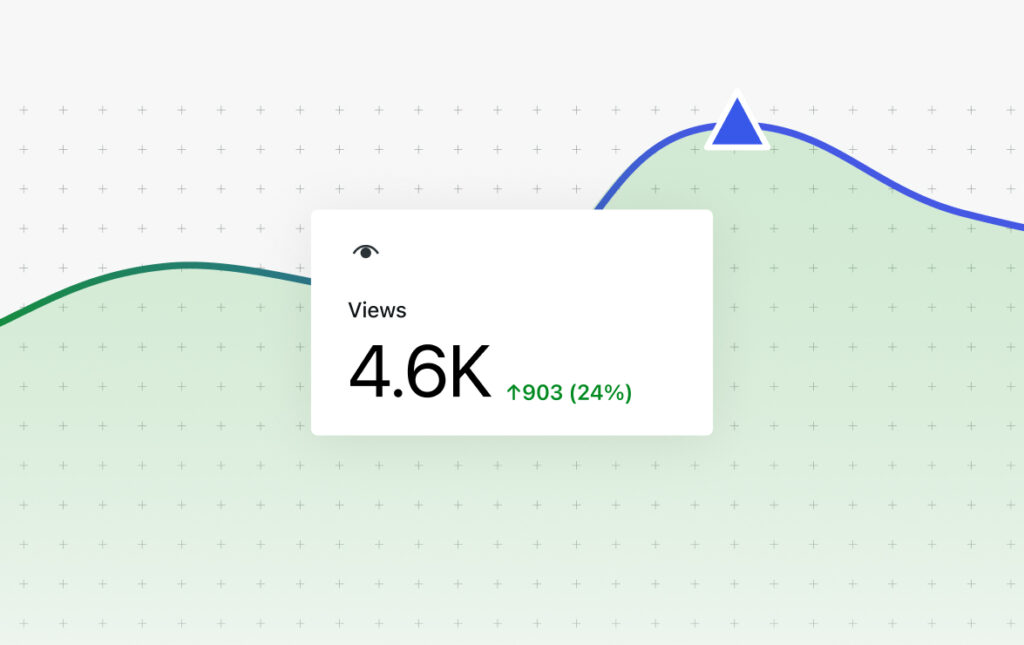Now Reading: How to Make a Portfolio Website in Three Simple Steps (+ Six Pro Tips)
-
01
How to Make a Portfolio Website in Three Simple Steps (+ Six Pro Tips)
How to Make a Portfolio Website in Three Simple Steps (+ Six Pro Tips)

Creating a portfolio website is one of the easiest ways to showcase your work as a creative — whether you’re a designer, writer, photographer, or developer. Initially, in my career as a freelance writer, I thought a static PDF or Google Doc collating my best work would suffice.
Having a professional portfolio website, however, makes quite a difference. For starters, it raises your stature because it signals a certain level of credibility and commitment to your craft that isn’t evident in other formats (like PDFs or online portfolio makers).
Beyond first impressions, creating a portfolio website has tons of functional benefits — it’s interactive, easier to keep up-to-date, and more accessible. I can also see which pages on my website get the most views and engagement to optimize my portfolio better.
Best of all, building a professional-looking website is easier than you think. It might appear overwhelming at first, but this guide will make the process straightforward.
How to build a portfolio website in three simple steps
Building a portfolio website seems daunting at first — especially if you haven’t created a website before. It seems easier to rely on mock portfolio builders than to make a site from scratch, but I promise the process is easier than you think. Here are all the steps you need to follow:
Step 1: Select your best pieces of work
It’s tempting to dump all the work you’ve ever done in your portfolio, but take it from someone who used to have writing samples from college internships (yikes) on her site: You must only show your best work on your portfolio website.
Why? Your prospective clients are busy people. They don’t have the time to scour through a ton of samples to evaluate your work and determine whether you’re a right fit for their needs. Displaying too many pieces of work also doesn’t leave a lasting impression. You want a potential client to land on your portfolio website, find your best work easily, and remember you.
So, pick only the best of the best work you’ve done so far to display on your portfolio website. If you work in multiple industries or have different categories within your work, you can pick a few samples from each segment.
For example, I write for various sectors — such as the creator economy, software, and productivity. On my portfolio site, each niche is a different page containing a few of the best samples from each category.
Now, when a prospective client lands on my website and they’re in the software industry, they can easily find the best samples in that domain instead of sifting through irrelevant pieces of work.
Organizing my portfolio this way also saves me time when I’m communicating with a lead and need to send relevant samples.
If you want to show work you’ve done for fun, you can classify it separately as your passion project(s).
Takeaway: Select the best pieces of work you’ve done to showcase on your portfolio website. There’s not a singular ideal number of samples — it depends on your work experience, industry, and more. It always helps to think from a client’s perspective.
If they land on your portfolio website, which samples would impress them? How many samples would look too cluttered and make a client bounce? Which samples would best show your range of work? Start putting yourself in your client’s shoes and pick the best pieces of work accordingly.
Step 2: Choose your web host and domain name (if you aren’t already using WordPress.com)
If you’re already using WordPress.com to set up your site, you’re ahead of the game. If you’ve landed on this article without a WordPress.com account, no worries. Stick with me here — we’ll cover the foundation you need before you can bring your portfolio site to life.
You need two things to begin creating your portfolio website: a web host and a domain name.
- A web host is a service provider that stores your website’s files and makes them accessible on the internet. We recommend WordPress.com.
- A domain name is your website’s address on the internet.
Tip: If you’re confused between domain and hosting, this article highlights their differences and explains why you need both services for your website.
If you want to avoid the headache of finding and integrating a web host, a domain name, and a website builder, you can choose a managed WordPress hosting provider like WordPress.com — where everything is in one place. You also don’t lose the flexibility and control to customize your website however you wish.
Anyone can get a website up and running with WordPress.com. Start with one of these resources:
- Getting Started on WordPress.com (your intro to all things WordPress.com).
- Five-step website setup (a quick and easy guide to spinning up your site).
- Create Your Website on WordPress.com (our free and beginner-friendly video course that walks through the basics of building a website.
Once you go through the sign up flow, you’re ready to start building your website.
Tip: When you sign up with WordPress.com, you’ll be asked to choose a domain name. This can be something related to your business name, personal brand, or simply your full name.
You can also search available domain names with our domain finder tool or transfer an existing domain name to WordPress.com if you have one with another domain provider.
Step 3: Design your portfolio
The final step is actually designing your portfolio. If you’ve chosen WordPress.com as your host, you’ll have access to thousands of free and premium themes. There are also various themes specifically for portfolios so you don’t have to start building your website from scratch.
Once you decide on a theme, customize the website to your brand’s colors and fonts. If you have a logo for your creative business, you can add it to your website, too.
Then, start adding pages to your website. Here are the pages you should have on your portfolio site:
- Homepage: This is the first place someone lands on when they type your domain or discover your portfolio site. Your home page should briefly introduce who you are and explain what you do. It should also have call-to-actions — like “see my work” or “contact me” — to help potential clients navigate your website. Learn how to set your homepage.
- About page: This is where someone can go to learn more about you. Use this place to share your professional experience and sprinkle in some personality. The goal is to make someone connect with the person behind the website.
- Contact page: You can have a dedicated contact page or embed a contact form on your site on various pages. Make it easy for people to reach you — include your email address, social media links, and a contact form. If you’re comfortable, you can also include your phone number.
- Resume page (if applicable): If you need it, you can also include a resume page where people can view and download your resume. Learn how to upload documents and use the File block to make your resume downloadable.
- Portfolio page: This is the core of your site, where you show the work you selected in step one. WordPress.com has a dedicated portfolio function to showcase your work. Learn how to use it on your site. There are also portfolio plugins to help you organize your work in different ways.
The above are the essential pages you should have on your portfolio website, but don’t be afraid to get creative and add more pages if you need them. For example, if you’re planning to add blog posts that show your expertise, you can add a separate page for them on your site.
Tip: Don’t select your best work once and then let it collect dust. You need to regularly update your website with new samples to showcase your current skill level. I set aside an hour at the end of each month to add recent work to my portfolio. Set up a similar ritual that works for you to ensure your portfolio site always matches your existing skillset.
A look inside my portfolio website
Here’s how I’ve designed my portfolio site using the steps outlined in the previous section. Hopefully, it helps you get some ideas about elements you can use in your own portfolio.
1. Home page
The home page has a clear hero image and a headline about what I do. I start by introducing myself and giving a brief summary about the clients I work with and the services I provide. I debated about adding my photo, but I realized it instantly humanizes my website.

The call-to-action in the first section is to either visit the portfolio or scroll down to learn more about my work process. If you are a service provider, some details about how you work together can help clients feel more confident about your professionalism and get a rough idea about how you work.
The goal isn’t just to give potential clients a snippet of what working together feels like, but also to filter out clients who might not be a good fit.

In the middle of the home page, I’ve also added testimonials and logos of some of the brands I’ve worked with. This instantly builds trust and makes a potential client curious to learn more.

I’ve also added a contact form and an FAQ section at the end, so it’s easy for clients to contact me without leaving the website and have their common queries answered.

2. Portfolio
The portfolio page on my website begins with a reiteration of who I am, what I do, and logos of some notable brands I’ve worked with. I find this repetition is often helpful because potential clients often land on my portfolio page before they land on my home page.

The next section contains an image of me with the “Why should I hire you?” question answered. I’ve found adding this bit often helps soothe doubts of potential clients and helps me showcase how I stand out compared to the competition.

After that, I put a spotlight on my best two testimonials from notable (present or former) clients in my industry to build some credibility. In future updates, I also plan on highlighting a few core phrases in these reviews to make the website more skimmable and memorable.

Then come the samples. I categorize my samples into various folders to cater to the different kinds of clients I work with. I highly recommend doing this if you work in multiple industries, no matter how niche the difference is between them. It helps clients easily find exactly what they’re looking for to make the decision to hire you. It’s also handy when you want to send only one category’s sample to a potential client.

The portfolio page ends with the contact form and two more testimonials to seal the deal.

3. Work Samples
The work sample pages are simple: Each contains six samples and a relevant testimonial. These are the pages I update the most because I want these samples to reflect my latest and best work. Focus on being accessible instead of fancy here. Don’t make a client jump through hoops to find your best work.

What do I mean by relevant testimonials? Let me explain with an example: In the above productivity samples, I have added a majority of the work from my client, Todoist. So the testimonial is from the content manager in the same company.

This adds more weight and credibility in the eyes of a future client browsing this page. They can not only see the latest samples, but also read a review from a client in the same industry. Of course, this isn’t always possible, but do your best to pair each testimonial with relevant work samples. If you can’t grab a testimonial, a case study can also work wonders.
I also plan to add contact forms in these pages that are more personalized to the category. This will not only help clients contact me easily, but also help me precisely track where the majority of my leads are coming from.
Tip: Depending on how much time you have available, expect to spend about a week to build a small portfolio site with four or five pages. You can also consider using our custom website design service or expediting the process with our AI website builder.
How to use and promote your portfolio
To make the best use of your portfolio website, it’s important to get the word out and make it accessible. Ideally, it’d be the first thing a prospective client finds when they want to learn more about you and your work.
Here are five easy ways to make the most of your portfolio website:
- Add your portfolio site to your email signature: This way, everyone you communicate with can see and access the link. Over time, your email signature will make it easy for people to remember who you are and where they can learn more about you.
- Optimize your site for user experience: Make your website visually clean, easy to navigate, and mobile-friendly. Think from a client’s perspective and add relevant call-to-action buttons to make it easy for people to find what they need.
- Use SEO best practices: It’s ideal to rank in search terms that relate to your field and expertise. Write meta descriptions with relevant keywords, add alt text to images, and compress images for faster loading times. Learn more about WordPress SEO to make your portfolio site rank in search results.
- Share your portfolio website wherever relevant: The best way to make your portfolio more visible is to market it wherever appropriate. If you practice email marketing, add it to your newsletters. If you use a marketplace to find clients, add your portfolio site to your profile. If you have an about section on your client’s website, ask them to add your website there. Share it when you’re networking professionally or asking for referrals, too.
- Monitor website visits: Use Jetpack Stats to track site visitors (which is included with every WordPress.com website). For deeper website analysis, you can also set up Google Analytics. Use data to refine your website and identify areas for improvement.
Now that you’ve learned how to create, use, and promote your portfolio site, let’s understand how to transform it from good to great.
Six tips for putting together an effective portfolio
Over my half a decade of self-employment, I’ve seen a fair share of portfolios from creatives across a variety of fields. Here are six things the best portfolio sites have in common:
1. Tell a (short) story with every project
We’ve already covered why it’s essential to include only your very best work in your portfolio. The goal is to curate, not accumulate.
However, when you’re handpicking your best samples, it’s also important to add context to your projects. For example, if you’re a designer, you can add the goal and results of each sample alongside the work. If a project was more unique than usual, you can add that with the work sample and highlight how you solved any unexpected challenges.
Adding a brief context with your projects can help clients understand your work beyond the finished product — they’ll also see how you solve problems and the range of work you’ve done.
2. Be specific about the kind of work/clients you want to attract
The goal of your portfolio website isn’t just to attract clients, it’s to attract the right kind of clients. If you specifically work with B2B companies, for instance, you don’t want to be fielding contact forms from DTC businesses.
On your website’s home page and portfolio, make it clear exactly who you work with and the kind of work you do. For example, include a table about the kind of services you offer and the ones you don’t. I’ve also seen many people add their rates to their portfolio site. This helps leads determine quickly if their budget is a fit. I got a lot of inquiries about ghostwriting and how I approach it, so I added it as an FAQ on my website.

If you’re getting many irrelevant requests via your portfolio site, it might be a signal that you need to be more specific about your services and clients. Remember this isn’t an irreversible decision — if you’re offering a new service or working with clients from a new industry, you can simply update your website to reflect that.
3. Keep your portfolio refreshed and updated
It’s really easy to make your portfolio site once and let it gather cobwebs (been there, done that). You never know how many opportunities you’re missing simply because your portfolio doesn’t reflect your current skillset and services.
I set aside one day each month to refresh my portfolio. This doesn’t just mean updating the samples with my latest work, but also adding more testimonials, showing the impact of my work (like social shares), and editing my service offerings if I’m making any procedural changes.
Make it a part of your weekly or monthly routine to update your portfolio website. The longer you put it off, the harder it becomes to pick up the task, and if you refresh your site regularly, it’s much less time-consuming, too.
4. Integrate your site with your social media accounts
A client might discover you via your social media account. When they do, they should land on your portfolio with minimal effort, making it easy to contact, communicate, and hire you. Luckily, almost all social media platforms make it easy to add a link in your bio where you can add your portfolio. I’ve added mine across LinkedIn, Instagram, and X.

Integrating your portfolio website seems like a small thing, but it goes a long way. It funnels your client exactly where you want them (on your portfolio website) rather than letting them open another tab, search your name, and then find your website.
5. Include testimonials from past clients
Testimonials from previous clients build trust and credibility for your work on a whole other level. Your samples just show the finished product, but testimonials show your communication skills, how pleasant you are to work with, and any standout qualities you have compared to the competition.
Ask your existing or past clients to write a testimonial that you can add to your website. To make it easier for them, provide a list of questions they can answer to write it.
Once you get a few testimonials, add them across your website. You can highlight key quotes to make them more impactful, too.
6. Consider adding a blog that showcases your expertise
This tip is optional, but it can be beneficial to add a blog on your portfolio website that relates to your service. For example, if you’re an email marketer, you can write posts about best practices to follow in an onboarding sequence, common mistakes you see people make, etc. These kinds of posts can build even more trust and show off your expertise in the service you provide.
You don’t need to publish a blog on your site every week, but even a couple every quarter can help you stand out from the crowd. Think about what would impress your clients and write blogs about that. If you already post on social media, you can easily repurpose content in both formats.
Your portfolio needs its own home
Building your portfolio website using a web host like WordPress.com means you have complete control over how you present your work, who sees it, and how you want to scale your presence. Closed or proprietary platforms can change their rules, restrict customizability, or even disappear overnight. That’s a big risk — especially for a site that’s your bread and butter.
The best investment you can make for your creative career is owning your online presence. Build your site using WordPress.com today.
Original Post https://wordpress.com/blog/2025/09/30/portfolio-website/
















